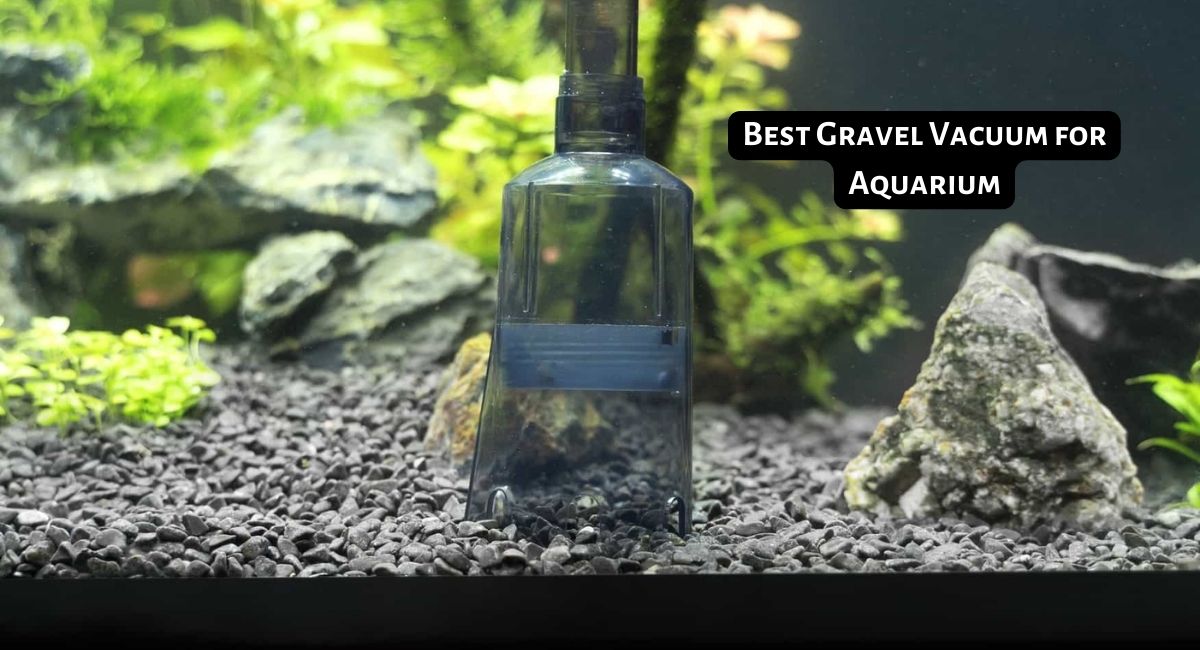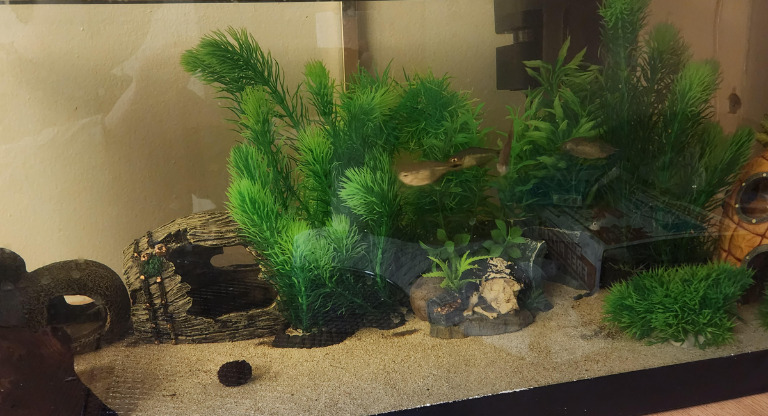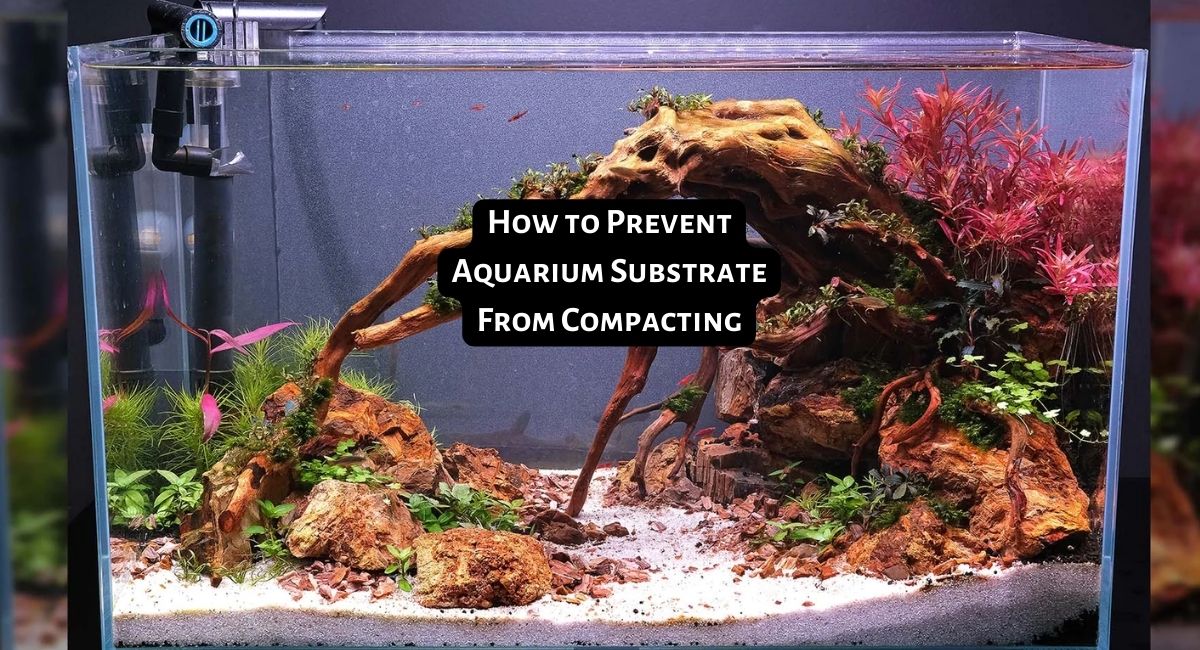Smartplantedaquarium.com participates in affiliate marketing programs. We may earn commissions on purchases made through our affiliate links. This doesn't affect our content or recommendations and we only recommend products we would put in our own tanks.
If you’re an aquarium owner, you know the importance of keeping your tank clean and healthy. Regular water changes and cleaning the gravel substrate are essential to maintaining a happy and thriving aquatic environment.
One of the best tools for this job is a gravel vacuum, which makes it easier to access dirt and debris that has sunken down into the substrate. Finding the best gravel vacuum for aquarium can be tricky.
In this blog post we’ll discuss some of the factors to consider when selecting one. We’ll also share tips for using them safely and effectively so that you can get maximum performance from your new equipment. Read on to learn more!
TL;DR
A gravel vacuum for aquariums is a useful tool for maintaining a clean and healthy tank environment. It helps to remove excess food, detritus, dirt, and other unwanted debris from the gravel bed. Furthermore, it can also help prevent build-up of dangerous toxins in the water.
Best Gravel Vacuum for Aquarium
If you’re looking for the best gravel vacuum for your aquarium, you’ve come to the right place. In this blog post, we’ll discuss why a gravel vacuum is an important part of fish tank care, what features to look for when selecting one, and review some of the top-rated vacuums on the market. We’ll also share tips on how to use your new gravel vacuum safely and effectively so that your aquarium always looks its best! So read on to learn more about finding the perfect gravel vacuum for your aquarium.
What are Gravel Vacuums?
Do you have an aquarium at home? Are you wondering how to clean aquarium substrate? It’s actually quite simple! One of the most effective tools for cleaning the substrate is a gravel vacuum. Gravel vacuums are used by aquarists to remove debris from the substrate, which can accumulate over time and lead to poor water quality.
Gravel vacuums are like the superheroes of aquarium maintenance. They’re the tools that help aquarists keep their fish tanks in tip-top shape. You see, over time, debris like uneaten food, fish waste, and dead plant matter can accumulate in the substrate. If left unchecked, this debris can cause some serious water quality issues, which can ultimately harm your aquatic pets.
But fear not! Gravel vacuums are designed to remove this debris from the substrate. They’re pretty simple tools, too. They typically consist of a long plastic tube with a wide, bell-shaped end that is used to siphon out water and debris from the bottom of the tank. The tube is connected to a hose or a bucket that allows the dirty water to be removed from the tank.
It’s amazing how something so simple can be so effective! With the help of a gravel vacuum, you can keep your aquarium clean and healthy, and your fish and plants happy.
How to Choose the Best Gravel Vacuum for Your Tank?
When it comes to aquarium maintenance, the gravel vacuum is an invaluable tool for keeping your tank clean and healthy. A good gravel vacuum should be able to effectively remove debris and uneaten food that can lead to harmful algae growth and water pollution. With so many models available on the market, it can be difficult to know which one is best suited for your tank. Here are some tips for choosing the right gravel vacuum for your aquarium:
- Consider the size of your tank – Make sure you get a gravel vacuum with enough suction power to work in larger tanks. Smaller tanks may require less powerful vacuums as they don’t have as much surface area or volume of water. Also consider whether you need a model that can handle both fresh and saltwater tanks.
- Look for a durable design – A gravel vacuum should be able to withstand frequent use without becoming damaged or worn down quickly. Look for models that are made from strong materials like stainless steel or plastic. This will give you peace of mind knowing your investment will last longer.
- Make sure it is easy to use – Consider factors such as the length of the hose, how easy it is to switch between the different settings, and how comfortable the grip is when using it. These features will make cleaning easier and faster so you don’t have to spend too much time maintaining your aquarium.
- Choose one with an adjustable nozzle – An adjustable nozzle allows you to reach even the tightest corners of your tank. This is important as it allows you to get into areas that are difficult to clean using other methods.
By taking these tips into account, you can find the best gravel vacuum for your aquarium and keep it looking its best! With regular maintenance, you will be able to ensure a healthy environment for your fish and plants. So don’t hesitate to purchase a quality gravel vacuum today!
What are the Alternatives to Gravel Vacuums?
For aquarists, a gravel vacuum is one of the most essential tools in their arsenal. But there are some alternatives to using a gravel vacuum that may work better for certain aquarium setups.
Algae Scraper
One such alternative is an algae scraper. This tool works particularly well for smaller tanks with limited amounts of debris or detritus in the substrate. The algae scraper comes with a handle and often features a series of sharp blades which you can use to scrape away any unwanted build-up from the tank walls, floor, and decoration pieces. These tools are relatively cheap and require minimal effort to clean the tank effectively.
Automated Cleaning Robot or “Roboscrubber”
Another useful alternative is an automated cleaning robot or “roboscrubber”. This tool is great for larger aquariums, as it can quickly scan and clean the entire tank, saving you time and effort. Roboscrubbers come with a variety of features such as adjustable speeds, suction power settings, and even an integrated filter system to help keep your tank clean and free of debris.
Siphon Method
Finally, there’s also the good old-fashioned siphon method. This involves creating a syphon tube out of tubing or hose that you connect to both ends of your tank. You then use this tube to manually suck up the debris from one side of the tank while allowing water to flow through the other end. While this isn’t necessarily a replacement for using a gravel vacuum, it can be used in combination with one to get the job done quickly and easily.
How to Use a Gravel Vacuum to Clean Your Tank?
Using an aquarium gravel vacuum is a great way to keep your tank clean and healthy. It helps remove dirt, debris and uneaten food from the substrate, which can lead to unhealthy water conditions if left unchecked. Here’s a step-by-step guide for using a gravel vacuum:
- Start by emptying out your tank of all its water and moving any decorations or plants aside. This will make it easier to reach the bottom of the tank while vacuuming.
- Choose the right size gravel vacuum for your tank – this means selecting one with a hose that fits comfortably inside the aquarium without being too long or cumbersome. The width of the nozzle should also be wide enough to accommodate all of the substrate in your tank, but not too wide to cause a huge mess.
- Place the gravel vacuum inside the tank and attach the hose to your bucket or sink for collection of debris.
- Place the nozzle on the substrate and gently pull it backward as you push down on top of it, creating suction and drawing up dirt into the hose. Be careful not to over-vacuum because this can damage fish eggs or small fry that might be hidden in between rocks and crevices.
- Stop vacuuming once you have reached your desired level of cleanliness in the tank, then detach the hose from your bucket or sink and replace any decorations or plants that were removed prior to vacuuming.
- Lastly, fill the tank back up with fresh water and replace your filter media if necessary.
By following these steps, you’ll be able to quickly and effectively clean your aquarium using a gravel vacuum – helping to ensure that it remains healthy and well-maintained for years to come! To find out more about the best gravel vacuums for aquariums, be sure to check out our blog post on the topic! It’s full of great information on what type of vacuum works best in different situations, plus tips on how to get the most out of your investment. Thanks for reading and happy vacuuming!
Gravel Vacuum Tips and Tricks
Gravel vacuuming for your aquarium is essential for keeping it clean and healthy. But if you’re not sure what type of vacuum to get or how to use it, here are some tips and tricks that will help make gravel vacuuming a breeze!
- Choose the right size gravel vacuum: To avoid clogging, choose a gravel vacuum with the right size head. If your tank has smaller fish or other smaller debris, choose a narrower tube while larger tanks can benefit from wider tubes.
- Vacuum in sections: Start at one end of the tank and move slowly around, gradually building up suction until you reach the opposite side. This helps keep the water level even throughout the entire tank and prevents disruption of the tank’s inhabitants.
- Clean the filter regularly: The filter on your gravel vacuum should be cleaned at least every week to keep it from clogging and reduce maintenance time.
- Use multiple vacuums for larger tanks: Larger tanks require more suction power, so it can help to use two or three vacuums simultaneously for optimal results.
- Change water often: To prevent excess debris from accumulating in your tank, change the water frequently using a siphon hose or automatic feeder. This will also help keep your gravel vacuum clean and working efficiently for longer periods of time.
Conclusion
In conclusion, the best gravel vacuum for aquariums depends on individual preferences. Depending on the size and type of your tank, some vacuums may work better than others. If you have a large tank with lots of substrate, then a manual gravel vacuum is probably your best option. If you’re looking for a more affordable option or one that requires less effort to operate, then an electric model might be a better choice. No matter which route you take, make sure to read reviews and do research before making your purchase so that you get the most bang for your buck.
Frequently Asked Questions (FAQs)
1. How to choose the best gravel vacuum?
When choosing the best gravel vacuum for an aquarium, consider factors such as size, power, and ease of use. Size should match the size of the aquarium; a larger aquarium requires a bigger vacuuming device with more suction power to efficiently remove debris on the substrate. Additionally, if noise is also a factor to consider, look for models that offer quiet operation. Lastly, make sure that the gravel vacuum has adjustable suction control so as to not disturb delicate organisms during cleaning. Be sure to research reviews from other aquarists who have purchased similar models in order to get an idea of which model may best suit your needs.
2. Is a gravel vacuum good to clean aquarium?
Yes, a gravel vacuum is an effective way to clean aquariums. This type of vacuum helps keep the aquarium’s substrate clean and free of debris, while also removing excess food and waste that can build up on the bottom of your tank. It is important to be sure to use the correct size for your aquarium. To ensure optimal results when cleaning with a gravel vacuum, it is best to do this task at least every two weeks or more frequently if needed. In addition, regular water changes are also recommended in order to maintain a healthy aquatic environment. With regular maintenance and care, using a gravel vacuum can help keep your aquarium looking its best!
3. Is there a substitute for gravel vacuums?
Yes, there are alternatives to gravel vacuums for aquariums. Many aquarists use a siphon or a turkey baster to clean the gravel of their aquariums. Additionally, some aquarists remove the water from the tank and manually clean out the gravel with gloved hands. However, these methods can be labor-intensive and may not provide as thorough of cleaning as using a gravel vacuum. Therefore, for most aquarium owners it is recommended that they invest in purchasing a good quality gravel vacuum for consistent maintenance and cleaning of their tanks.
4. Can gravel vacuum be used to remove rock algae?
Yes, a gravel vacuum can be used to remove rock algae from your aquarium substrate. Rock algae, also known as “green spot algae,” tends to grow on surfaces such as rocks, decorations, and even the glass walls of the tank. If you’re wondering how to clean algae from aquarium rocks, there are a few different methods you can try. You can use a gravel vacuum with a scrubbing attachment or a separate algae scraper tool. When using the gravel vacuum, position the bell-shaped end of the tube close to the affected area and use the scrubbing attachment to loosen the algae. Then, use the suction power of the gravel vacuum to remove the loosened algae from the surface.
5. Can gravel vacuum be used to remove fish poop from substrate?
If you’re wondering how to remove fish poop from substrate in your aquarium, a gravel vacuum is an effective tool to use. To use a gravel vacuum to remove fish poop from substrate, simply insert the tube into the substrate and move it around slowly, making sure to cover all areas of the substrate. As the vacuum sucks up the debris, be sure to keep an eye on the water level in the tank to prevent it from becoming too low. The debris is trapped in a filter or strainer, which prevents it from being released back into the tank.






